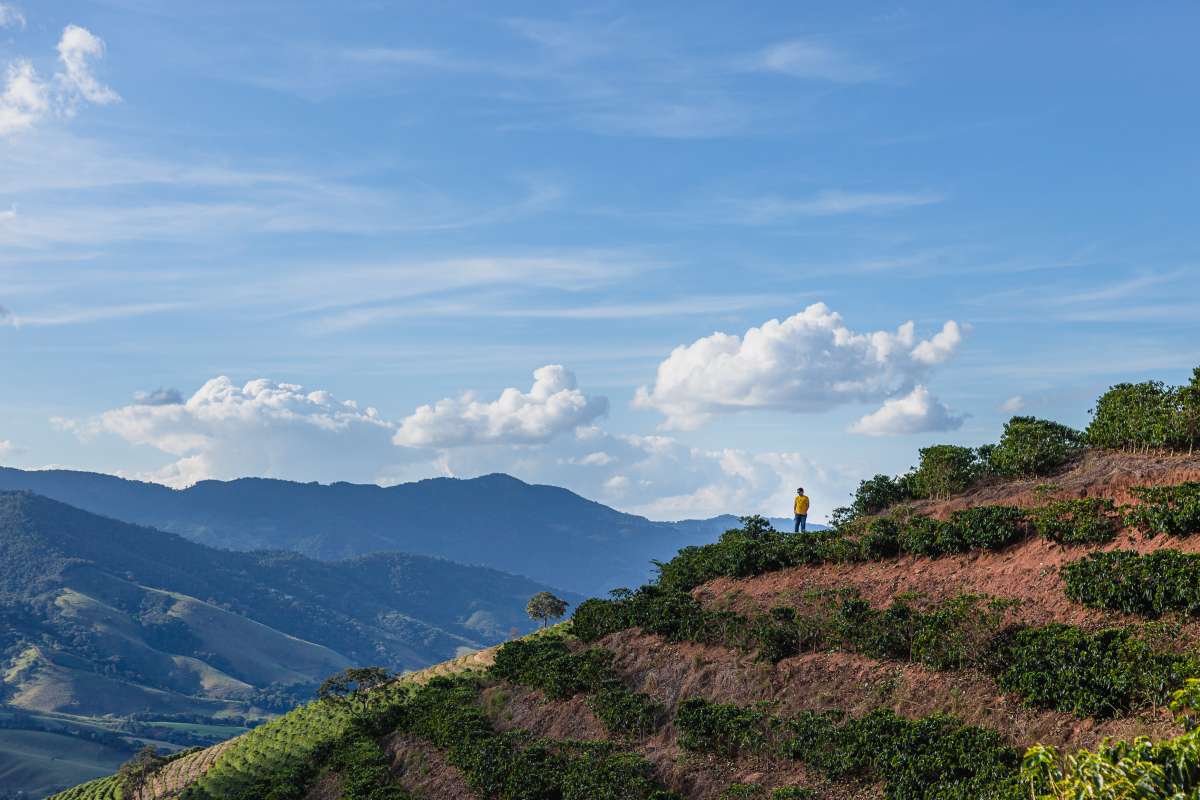This note was written by Samuel Klein, Partners' Green Coffee Buyer. He reflects on the difficulties of sourcing coffee amidst the pandemic, changes to climate, and political instability, and hints at what is to come for the industry and on our menu.
What a complicated time! Here in New York, as disruptions and uncertainties caused by the pandemic have temporarily seemed to fade, we're still feeling reverberations of supply chain issues elsewhere. So far, 2021 saw Ever Given run aground in the Suez Canal, heavy rains and the paro nacional protests in Colombia, a historic drought followed by ominous frosts in Brazil, and perpetual shipping container shortages caused by congestion in global transport hubs.
This year's la niña climate pattern brought excessive rains to Colombia, reducing yields in regions where many of our farm relationships are located. Then, as the weather improved, a proposed tax reform bill instigated nationwide protests that resulted in road closures between several major coffee growing regions and port cities like Buenaventura and Cartagena. While coffee has since resumed moving through these ports, we've seen delays in the arrival of fresh coffees, and it became substantially more difficult to acquire coffees from some of our favorite producers. Our summer menu doesn't feel complete without the coffees of Finca El Faldón, Aidé Garro, Andres Restrepo, and Alexander Zapata, but we're excited to welcome their return in the not so distant future.
Contrarily, Brazil has experienced months of drought, which also severely diminishes coffee yields. Now, with their harvest largely underway, parts of the major coffee growing states of Minas Gerais and Paraná have experienced frost. While the damage is still being assessed, just two hours of frost exposure is enough to kill a coffee plant, and it can take years for newly planted coffee to become productive. Because Brazil is the world's largest and most efficient producer of coffee, the combination of drought and cold weather has an outsized effect on the price of coffee everywhere. Sure enough, July saw the "C" price of commodity coffee reach its highest level in seven years. While specialty coffee and relationship-based sourcing seek to establish prices that are more stable and more sustainable than those set entirely by the market, large movements in the commodity price can still exert a significant, if indirect, influence.
Despite these ongoing logistical challenges, we're optimistic for our producing partners, for the stability of our year-round blends, and for the future of our seasonal single origin menu. This week we announced Alta Vista from Robson Vilela Martins in Minas Gerais, Brazil, a beautiful and comforting coffee reminiscent of poached pear, cocoa, and macadamia. Looking to the near future, we'll soon introduce a vibrant single-producer coffee from Nyeri County, Kenya followed by our perennial favorite Chiroso from Colombia. Then, as summer turns to autumn, we hope to see the return of some more familiar names from our longtime producing partners in Guatemala, Honduras, Rwanda, and Ethiopia.







Leave a comment
This site is protected by hCaptcha and the hCaptcha Privacy Policy and Terms of Service apply.